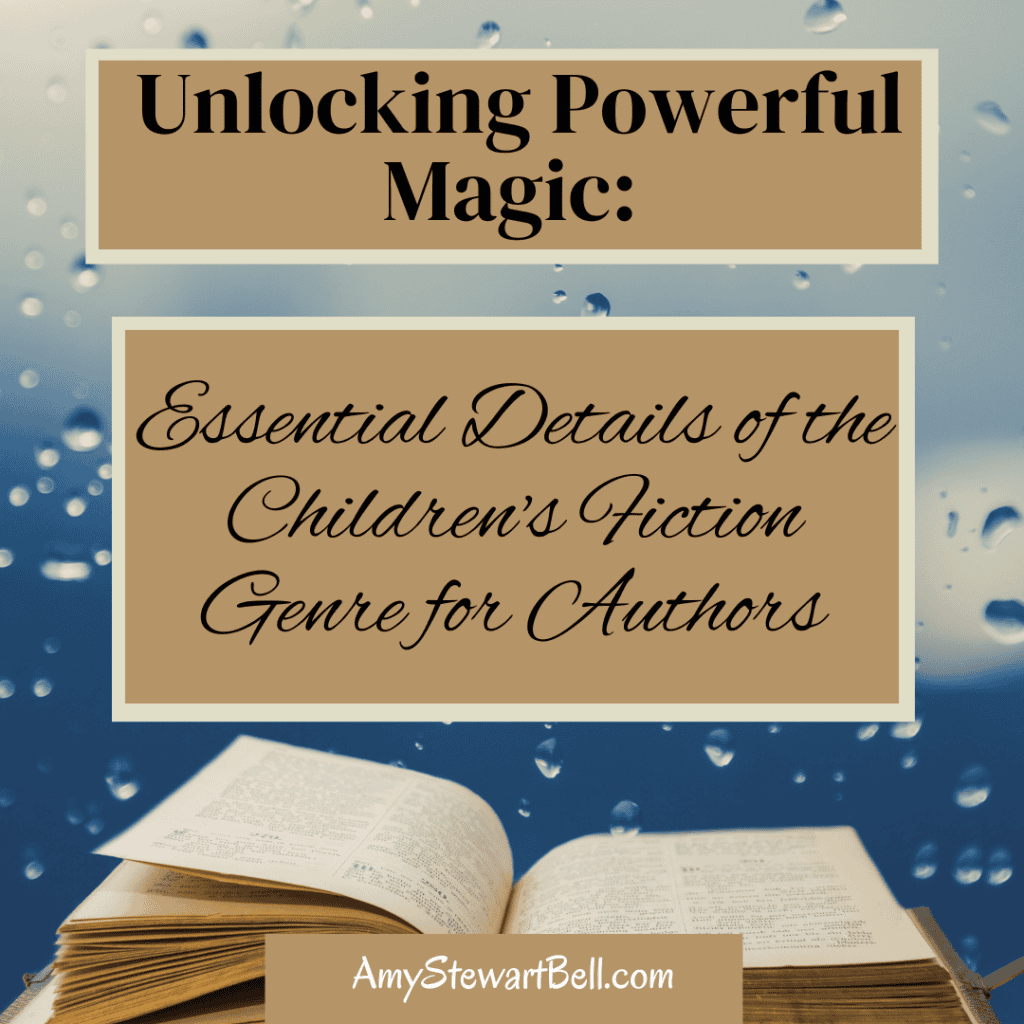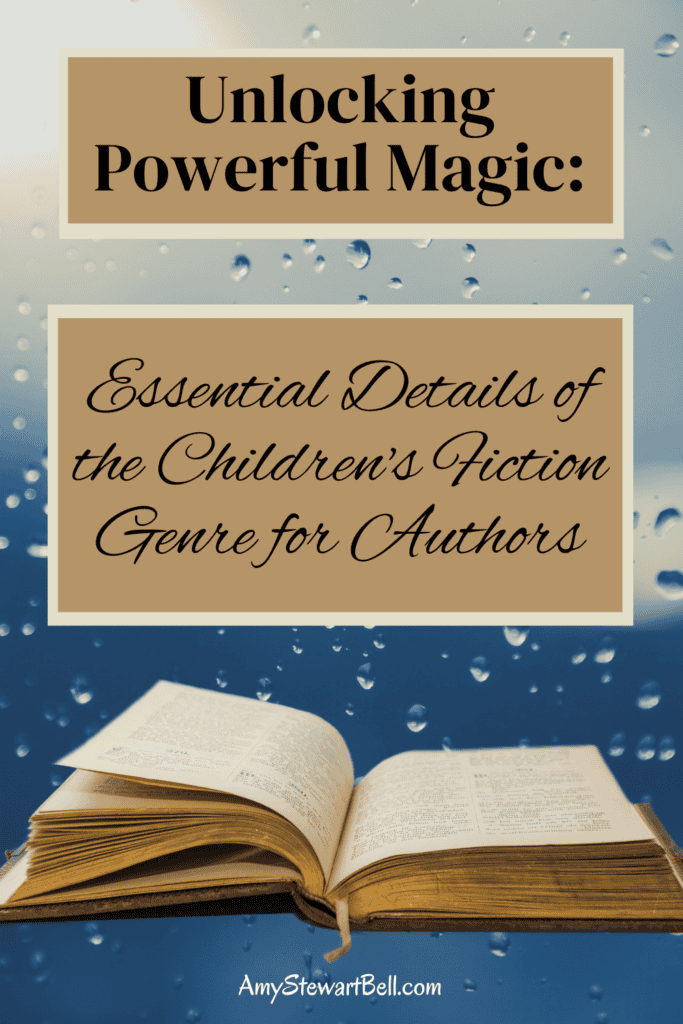Understanding the Children’s Fiction Genre: A World of Imagination

Children’s fiction is a wide world of experiences pieced together from the depths of imagination, wonder, and discovery. It serves as a gateway for young readers to explore fantastical worlds where anything is possible. In the realm of children’s fiction, every page turned opens up new adventures and sparks creativity in the minds of our future storytellers.
Kid’s books are not merely stories; they are powerful tools that ignite curiosity and foster an enduring love for reading. Through imaginative writing, authors create characters that resonate with children, allowing them to see themselves in heroic journeys or whimsical escapades. This genre champions storytelling for kids by embracing themes of friendship, bravery, and self-discovery—elements that shape their understanding of the world around them.
As we delve into this enchanting genre, we recognize its profound impact on young readers. Each tale encourages them to dream big and think critically while nurturing their emotional intelligence through relatable experiences. Understanding children’s fiction is not just about recognizing its importance; it’s about celebrating the magic it brings into the lives of children everywhere!
Key Characteristics that Define Children’s Fiction
Children’s fiction is filled with imagination, adventure, and invaluable lessons. At the heart of this genre are key characteristics that not only define it but also ignite a love for reading in young hearts.
First and foremost, age-appropriate themes are essential. These stories tackle subjects that resonate with children’s experiences and emotions, ensuring they feel seen and understood. Whether it’s the thrill of friendship or the challenges of growing up, these themes are tailored to their developmental stages.
Relatable characters breathe life into these tales. Young readers find joy in characters who mirror their own struggles and triumphs—be it a brave little mouse facing fears or a curious child exploring new worlds. This connection fosters empathy and allows children to navigate their feelings through the eyes of someone they can relate to.
Engaging language plays a pivotal role as well. The rhythm, rhyme, and playful word choices captivate young imaginations, making reading an exhilarating adventure rather than a chore. Narrative simplicity is equally crucial; stories must be easy to follow yet rich enough to spark curiosity about the world around them.
Finally, moral lessons embedded within these narratives serve as guiding stars for children navigating life’s complexities. They learn about kindness, bravery, honesty, and perseverance—all vital values that shape their character as they grow.
In essence, children’s fiction is not just about entertaining; it’s about nurturing young minds with stories that inspire growth and understanding while igniting an everlasting passion for reading!
The Importance of Age Groups in Children’s Fiction

When it comes to children’s fiction, understanding age groups is not just a matter of categorization; it’s about recognizing the profound impact stories have on young minds at different stages of their development. Picture books, for instance, are the gateway to imagination for toddlers and preschoolers. They ignite curiosity and foster a love for reading through vibrant illustrations and simple yet engaging narratives. This early exposure is crucial as it lays the foundation for literacy and cognitive skills.
As children grow, so do their reading needs. Early chapter books serve as a bridge between picture books and more complex narratives, catering to emerging readers who crave adventure but still need manageable text. These stories empower children by instilling confidence in their reading abilities while nurturing their burgeoning independence.
Then we step into the realm of middle grade fiction—a magical space where themes become richer and characters more relatable. At this stage, readers begin to grapple with deeper emotions and social dynamics, making it essential that these stories resonate with their experiences.
Finally, young adult fiction captures the tumultuous journey of adolescence with all its complexities. This genre becomes a safe haven where teens can explore identity, relationships, and societal challenges through characters who mirror their struggles or inspire them to dream bigger.
In crafting stories tailored to these distinct age groups—picture books for wonder-filled tots, early chapter books for curious explorers, middle grade tales for budding thinkers, and young adult narratives that echo real-life dilemmas—we honor our target audience’s developmental journey while igniting a lifelong passion for reading!
Exploring Common Themes and Tropes in Children’s Stories
Children’s stories are rich with common themes and tropes that resonate deeply with young readers. One of the most prevalent themes is friendship and adventure, where characters embark on thrilling journeys that not only entertain but also teach valuable lessons about loyalty and camaraderie. These narratives often showcase the importance of building connections, highlighting how friendships can empower children to face challenges head-on.
Another significant trope is overcoming fears. Many stories feature protagonists who confront their anxieties, whether it’s a fear of the dark or a reluctance to try something new. These tales serve as powerful tools for teaching resilience, encouraging children to step outside their comfort zones and embrace growth.
Magical realism further enhances these narratives, allowing children to explore fantastical elements intertwined with everyday life. This genre invites young readers to expand their imaginations while grounding them in relatable experiences.
Family dynamics also play a critical role in children’s literature. Stories often delve into relationships between siblings, parents, and grandparents, showcasing both conflict and love. Through these interactions, children learn about empathy and understanding within their own family structures.
Ultimately, themes of growth and discovery are at the heart of many children’s stories. They encourage young readers to reflect on their own journeys towards self-awareness and personal development. By exploring these common themes and tropes, we equip children with the tools they need to navigate their world confidently.
Diverse Voices: The Role of Representation in Children’s Literature
Diverse voices in children’s literature are not just a trend; they are a vital necessity! The stories we share with our children shape their understanding of the world, and these narratives must reflect the richness of cultures and experiences that exist around them. Bilingual books for kids serve as powerful tools, bridging language barriers while celebrating cultural heritage. They allow young readers to see themselves in the pages, fostering a sense of belonging and pride in their identity.
Inclusivity in children’s fiction is more than just representation; it’s about creating empathy and understanding from an early age. When children encounter diverse characters in literature, they learn to appreciate differences and recognize shared humanity. Each story becomes an opportunity for exploration—opening doors to conversations about race, culture, and community.
Cultural representation in stories enriches our literary landscape, inviting all children to dream big while knowing that their backgrounds are valued. Let’s champion authors who dare to tell unique tales that resonate with every child, ensuring that no voice goes unheard. Together, we can nurture a generation of readers who embrace diversity as a strength!
The Craft of Writing Compelling Characters for Young Readers
Crafting compelling characters for young readers is an exhilarating journey that ignites the imagination and fosters a love for storytelling. When it comes to character development for children’s books, the key lies in creating relatable protagonists who resonate with kids on a personal level. These characters should embody traits that children can see in themselves or aspire to, whether it’s bravery, curiosity, or kindness.
Imagine a young hero who faces challenges head-on, teaching kids the importance of resilience and courage. It’s not just about their adventures; it’s about how they navigate their emotions, friendships, and fears—elements that mirror the experiences of young readers.
But let’s not forget the magic of memorable side characters! These vibrant personalities enrich the narrative tapestry and provide essential lessons through their quirks and interactions. Whether it’s a wise old mentor or a mischievous sidekick, these characters add depth and humor to stories while helping shape our protagonists’ journeys.
In crafting these unforgettable figures, we have the power to inspire empathy and understanding in our young audiences. So let your passion flow as you breathe life into each character—after all, they are not just figments of your imagination; they are gateways for children to explore their own worlds!
How to Market Your Children’s Fiction Effectively as an Author
Marketing your children’s fiction is not just a task; it’s an adventure that can ignite the imaginations of young readers and create lasting connections with families. Social media promotion for kid’s books is a powerful tool that allows you to showcase your vibrant stories and characters. Platforms like Instagram and TikTok are bursting with opportunities to share captivating visuals, read-aloud sessions, or even fun behind-the-scenes content that resonates with both kids and parents alike.
Connecting with educators and librarians is another essential strategy. These key influencers are often the gatekeepers to your target audience, so building relationships with them can open doors to invaluable support. Consider reaching out for author visits or providing copies of your book for their collections—your story could become a beloved part of their curriculum!
Book fairs and readings are fantastic venues where you can engage directly with young readers. These events create an electric atmosphere filled with excitement, allowing you to share your passion for storytelling in person. Don’t shy away from hosting interactive sessions where children can participate in fun activities related to your book!
Lastly, engaging with parents online is crucial in today’s digital landscape. Create a community around your work by sharing parenting tips, insights into the writing process, or simply celebrating the joys of reading together as a family. By fostering these connections, you’re not just marketing a book; you’re creating an experience that resonates deeply within their hearts—and that’s what truly matters!
Conclusion: Embrace Your Passion for Writing Children’s Fiction and Inspire the Next Generation!
LET’S CONNECT!
There are many ways to connect withAmy Stewart Bell. We would love to know what you think and any of the topics we offer. We welcome your comments and want to interact with you!
If you haven’t yet, grab your copy ofOnce Captured, the first in Amy’s Captive Series. And now you can grab the second in the series,Uncharted Captivity, as well!
You can also connect in other areas. Join us on Instagram@AmyWritesAll, on X@AmyWritesAll, and on Facebook@AmyWritesAll.
Be sure to join our community newsletter; you will get even more inside info!







